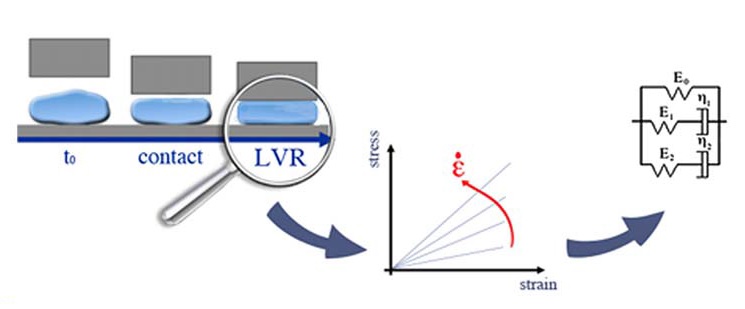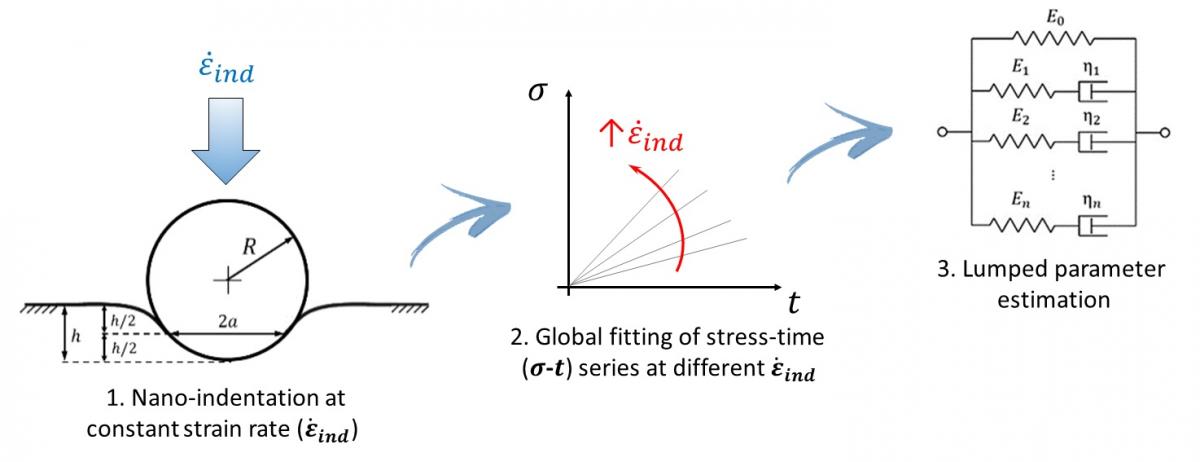Among the extracellular matrix (ECM) signals provided to cells, mechanical cues have been shown to play critical roles in regulating cell behaviour and function during tissue development, homeostasis and disease. Despite native biological tissues and ECM derivatives (e.g. collagen and gelatin) generally exhibit viscoelastic behaviour with stress-relaxation, most of the studies published to date focus on static properties only and typically use purely elastic materials as substrates for cell culture. Therefore, the need of accurately characterise material viscoelastic properties of soft tissues and biomaterials either to study tissue pathophysiology or to develop mechanically-mimicking substrates for in-vitro models is evident.
- Bulk viscoelastic characterisation: the epsilon dot method
We have exploited the strain-dependent behaviour exhibited by viscoelastic materials to develop a new method (i.e. the epsilon dot method, Tirella et al., JBMR, 2014) for the derivation of material viscoelastic constants for lumped parameter models through bulk compressive tests performed at different strain rates. Based on rapid measurements and not requiring any trigger force to identify the initial point of compression, this method is particularly suited for testing soft and highly hydrated materials that may degrade over time and suffer from pre-stress, being significantly advantageous over classical step-response methods (e.g. creep and stress-relaxation) or dynamic mechanical analysis (Mattei et al., Journal of biomechanics, 2014).

Figure: The epsilon dot method concept.
- Micro-scale viscoelastic characterisation: the nano-epsilon dot method
To characterise material viscoelastic properties at typical cell-length scales, hence measuring what cells "feel" in their native environment or during in-vitro cultures, we have recently adapted the epsilon dot method from bulk to nano-indentation testing, developing the nano-epsilon dot method (Mattei et al., JMBBM, 2015). This project was carried out in the framework of an on-going collaboration with Optics11, a Dutch company that develops and commercialises nano-indentation instruments specifically designed for tissue engineers and biomaterial scientist, such as the PIUMA Nanoindenter, available in our laboratories.

Figure: Schematic of the nano-epsilon dot method.
Contact info:
Ludovica CACOPARDO
Related publications:

